From The PACS Designer: "Re: cloud basics. Since the number of Cloud solutions being introduced is increasing with each passing month, TPD thought it would be good for HIStalkers to have a place to go for an education in this new web concept. Earlier this year, ReadWriteWeb had an excellent post on the subject after an Amazon Cloud outage occurred." Link.
From Dr. Lisa Cutty: "Re: Epic. Nice find on Epic’s interview technique." Link. Epic paid all the guy’s interview travel costs, which is cool, although he didn’t like the behavioral interviewing questions or the usual HR nonsense: "After this was the interview by HR. and this was the worst ever. nothing to do with my field. no real point to these questions either, just the standard bullshit HR questions." I’d read it quick if you’re interested because I’ll bet it’s coming down shortly.
From Thru the grapevine: "Re: Siemens. 200 more laid off by Siemens. This time it hit the sales force." Unverified. The last time somebody claimed more layoffs had happened, we asked around and couldn’t verify it, so I’m skeptical. Confirmation welcome.
From Joker: "Re: the $100M for ONE (1) Soarian module. Is this a joke? Can we know the name of the hospital that is so generous in its investment strategy?"
From Beltbuster: "Re: Allscripts-Misys. With the pending merger, the entire sales force (Misys, Touchworks, A4, etc.) is being flown to Phoenix for four nights. If I was a stockholder, I would wonder why the meeting was not in Chicago (Allscripts home) or Raleigh (Misys). I’m sure they’re trying to rev up the engines for Q4 performance for the combined entity, but I would have to imagine this junket will be a fairly expensive endeavor. It’s yet another example of wasteful spending (acquisition of ECIN, Advantix legacy PM, Amicore …)"
From James West: "Re: online storage. I think Chrome can still use some Firefox extensions. If so, simply install Gspace and you can use all your Gmail storage like a network drive. I love it! I sync files I use on multiple computers with my Gmail and have key documents available at any computer I go to. It’s all in your inbox, so to access anything all you need is Gmail, not Gspace." I tried Gspace and it works just like an FTP client, although I kept getting errors (even in Firefox) so I wasn’t able to save anything. Worth another try, though, since Gmail comes with 2GB of storage and you can open multiple free accounts that Gspace can use.
From HIT Guy: "Re: format. I have to disagree about the new layout. It makes HIStalk a lot less legible. Certainly you more than deserve the success and the sponsors, but the actual content now looks uncomfortably sandwiched between two ginormous columns of (gulp!) flashing ads." I’m still fine-tuning (thanks, Maia, for the idea of adding vertical space between the ads), but let me explain the ads on the right. Medicity and eScription were HIStalk’s first sponsors, so I gave them one small little perk of having their ads in the same spot all the time, figuring they made it all possible by taking that first brave step back in the Stone Age. No other ads will be placed on the right side. All of the other comments about the changes have been positive. I kept readability front of mind (text not too wide, not too closely line spaced, no ads inside the text, etc.) I’ve got a guy making a setup change that’s supposed to make the database calls more efficient and hopefully speed up page loading even more. Here’s proof that Medicity was #1 in this screenshot from July 2005 (minus the graphic). eScription came on board not long after and so did some other cool sponsors who like what we do enough to support it, which I appreciate a lot.
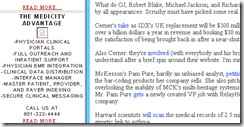
Inga and I don’t solicit sponsors, in case you were wondering how that works. When someone e-mails me asking for info, I e-mail back an amateurish and irreverent PDF that Inga and I threw together describing what we do (which they already know, of course, or they wouldn’t be asking), and companies either say they want to sponsor or they don’t based strictly on that one e-mailed PDF. Sometimes companies sponsor right after we mention them. That’s not coincidental, but it’s also not intentional: they are just shocked at the response from you readers (not braggin’, just sayin’). We never (and I mean NEVER) think about catching a potential sponsor’s eye when we pick stuff to write about. Nobody’s accusing us, but I just wanted to go on the record. Having sponsors is a by-product of what we do, not the reason we do it.
Former QuadraMed CFO David Piazza is a former-no-more. He’ll stick around after all, having withdrawn his August 8 resignation.
Tomorrow is Readers Write day, I just remembered. I’ve got a cool piece a doc sent in that gives an insider’s perspective on an extremely large EMR implementation (cough**KP**cough). Your prose is still welcome, though.
Pegasus Imaging Corporation files suit against Allscripts, claiming intellectual property infringement over licensing fees for a Pegasus development toolkit. According to the company’s site, its image compression technologies are used by GE, McKesson, Philips, Siemens, and Toshiba.
Mobile Data Software is awarded a $10 million PM/EMR contract with the US military that includes best medical practices, a global infrastructure, data mining, and integration with a central repository. All for military dogs, 3,000 of them, or $3,333 per dog.
I got an e-mail invitation from Carolyn Clancy from AHRQ inviting me to attend an EHR safety conference in DC in October. What was cool: (a) I have no idea why they would ask me; (b) they offered to pay all travel costs, probably figuring the current administration has put the country so deeply in debt that my night at the Omni Shoreham wouldn’t really matter; (c) a bunch of industry luminaries were copied on the e-mail, so I’ve got all kinds of e-mail addresses in case I feel the need to mind-meld with Charles Safran or Rob Kolodner. I’m kidding, but it was nice of them to ask. I was impressed until I saw journalist types on the list, which means I’m probably supposed to sit with the reporters and provide exposure, not thought leadership. It was like that when I took freshman journalism in high school: the cheerleaders were all over me when I was taking newspaper or yearbook pictures, but they headed off with the jocks the instant I ran out of film.
HIMSS starts sending e-mail reminders for the annual conference a full seven months before it starts, hoping you’ll plan to leave spring where you are to go back to winter in Chicago. Dennis Quaid is a keynoter, so you can ask him if he’s certain that ex-wife Meg Ryan wasn’t faking her intimate ecstasies with him like she did with Billy Crystal in When Harry Met Sally. HIMSS has some good deals on hotels for a change, beating the usual travel sites, but you’ll still pay $250 or so for anything that’s on the shuttle route and not cohabitated by crack addicts.

Just what you’ve been waiting for in choosing a strategic HIT partner: a list of which Fortune 100 companies are on Twitter. Great news: McKesson is, so you can … well, damned if I know why you’d want to Twitter a big company (or anyone else, for that matter). Maybe I just don’t get it. I don’t even send text messages on the cell phone (they’re 10 cents each on my plan and I’m cheap, plus the keyboard is terrible).
Does this sound like a real degree? University of Michigan offers a master’s in social computing. Maybe students get credit for wasting time on Facebook or Twitter.
ADAC …. er, Eclipsys … brings on Bill Bregar as VP of quality. Like everyone else there since Andy Eckert took over, he spent time at ADAC. They were a Baldrige winner before Philips bought them out, so he’s got some cred.
Charge master guys Craneware says it has 950 US hospital customers and profit and revenue were up in the 25% neighborhood for the fiscal year.
Sage’s Intergy EHR tops an ambulatory EHR report. "There is a perception within the industry that Intergy EHR is just the old Medical Manager product that Sage acquired in 2006, but that isn’t the case at all. Intergy is entirely new and users are making excellent use of it to achieve higher quality of care and better outcomes."
iMedica CEO Michael Nissenbaum checks in on the acquisition rumors: "Since your pages are being filled with rumors, let me state a fact: We are not being acquired! Hope to share more with you in the coming weeks, but since your pages, and lips of competing reps are raising this issue in the market, it just is not true." Scumbag reps. Prospects, if a salesperson brings in vague rumors to steer you away from your preferred vendor, send ’em packing, even if the rumors are from a pretty good source (like here, for example). If news hasn’t been publicly announced, it shouldn’t impact your decision (you could have bought last week, after all, before the latest buzz that could turn out to be untrue).
MedcomSoft has a new plan: "… sharpen the focus of its sales activities in an effort to target customers with the highest probability of yielding immediate returns." Wow, those Raymond James guys really know how to bust it out. If that’s a new plan, everyone involved with the previous one should be thrown out.
Eastern Oklahoma Medical Center goes live on CPSI’s documentation system. I wasn’t there, but the Poteau Daily News was and took this picture.
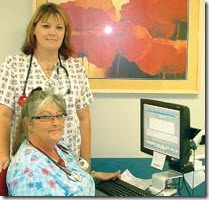
I’ve got an interview I’ll be running soon. Know anyone I should talk to next? Let me know.
Speaking of thrown out, that’s what the governor of Vermont and several legislators want done with the entire board of Vermont Information Technology Leaders. Outgoing board member Larry Ramunno disagrees, saying it’s a private, not-for-profit organization and the politicians can keep the $2.8 million VITL wanted from the state if they don’t like it.
An arrest warrant is issued for an MD Anderson clerk accused of stealing patient identities.
E-mail me.
HERtalk by Inga
From Justin Barnes: “Re: the renaming of EHRA. Members of the HIMSS EHR Association join together to work with unified efforts and with a single voice for the nationwide adoption of electronic health records. Our collaborative initiatives are aligned with the goals of medical services providers, member companies and other organizations to facilitate the interoperable and secure exchange of patient health information. Thus the name Electronic Health Record Association or EHRA best reflects the contributions and overall objectives of the association and its constituents." When Barnes sent us a note last week, Mr. H thought we had called the organization by the name wrong. Thanks to this explanation by the EHR Association chairman, the name confusion is no more.
From Eric Fishman: “Re: speech recognition. Inga, we put together a brief, and I believe entertaining, video on speech recognition. If you have three minutes, please take a look. Hope you enjoy watching it as much as we enjoyed making it.” Link. Eric is president of EHRConsultant and this little YouTube clip is pretty cute.
Trizetto promotes Tony Bellomo to president. He replaces Kathleen Earley, who arrived at Trizetto four years ago after executive management stints at IBM and AT&T and is leaving to “pursue other interests.” Someone needs to come up with another euphemism for “we pushed ‘em out.”
The 1,300-bed Wake Forest University Baptist Medical Center (NC) is now wire-free, following the installation of a 900-access-point wireless LAN. The total project cost was just under $900,000.
The Dutch are requiring all providers of children’s healthcare to use electronic patient files by the end of 2009.
The Heath Information Trust Alliance announces the addition of two new executive council members. Kaiser Permanente CIO Patrick Heim and BCBS Massachusetts VP Robert Mandel, MD are now part of the team working to create a Common Security Framework for PHRs.
The Minnesota Health Information Exchange contracts with Covisint to build an e-health exchange.
Perot Systems has successfully rolled out a hospital information system in multiple hospitals and primary care centers in Abu Dhabi.
Doctors ordered three times as many CT scans last year than they did in 1995. A Los Angeles Times article notes that scanner manufacturers like Siemens and GE tout the ease of making money with the devices: two scans a day can pay for a machine and its operation over a five-year period and 10 scans a day bring in more than $400,000 a year profit.
If you need a personal DNA scanning service, Google-backed 23andMe just cut its price from $999 to $399. The company hopes to attract more customers and expand its database of individual genetic profiles. The profiles are then sold to medical researchers, the guys with the real money.
HIStalk reader and former Sonitor exec Don Zeppenfeld is appointed VP of sales and marketing for LOGICARE.
An MGMA study finds that practice leaders are frustrated with Medicare’s PQRI. Problems include lack of data for improving patient outcomes and the administrative burden of participating. In addition, the feedback reports are difficult to access and are not timely.
Philips attempts to expand its market share in emerging countries with an acquisition of an India-based cardiovascular X-ray company.
E-mail Inga.






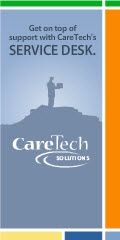







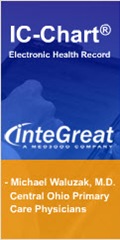

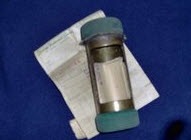


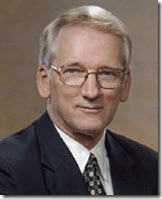























I can run my medical records through AI models all day long and get all sorts of recommendations for care…